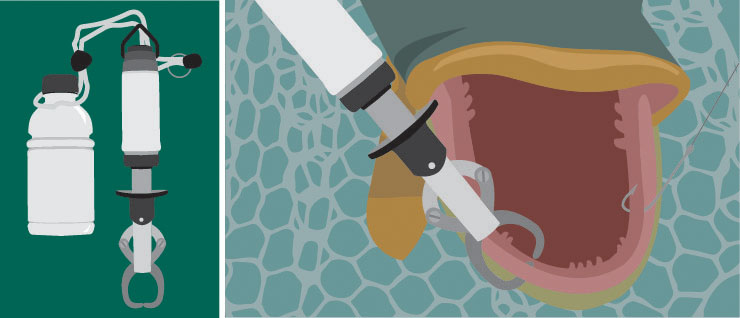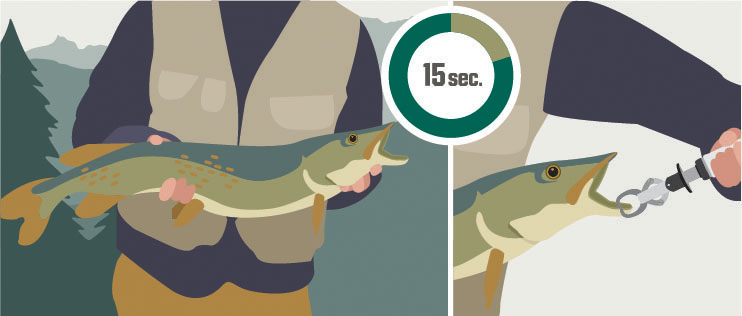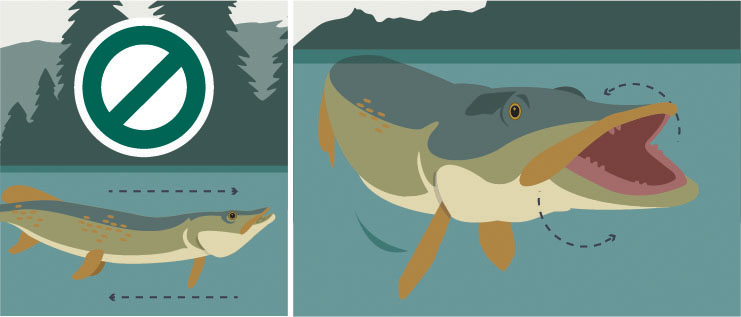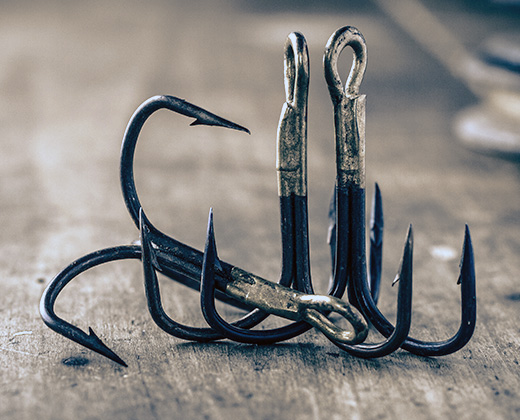How to Properly Handle and Release Toothy Fish
Consider these steps to protect your fingers while ensuring your catch lives to fight another day.
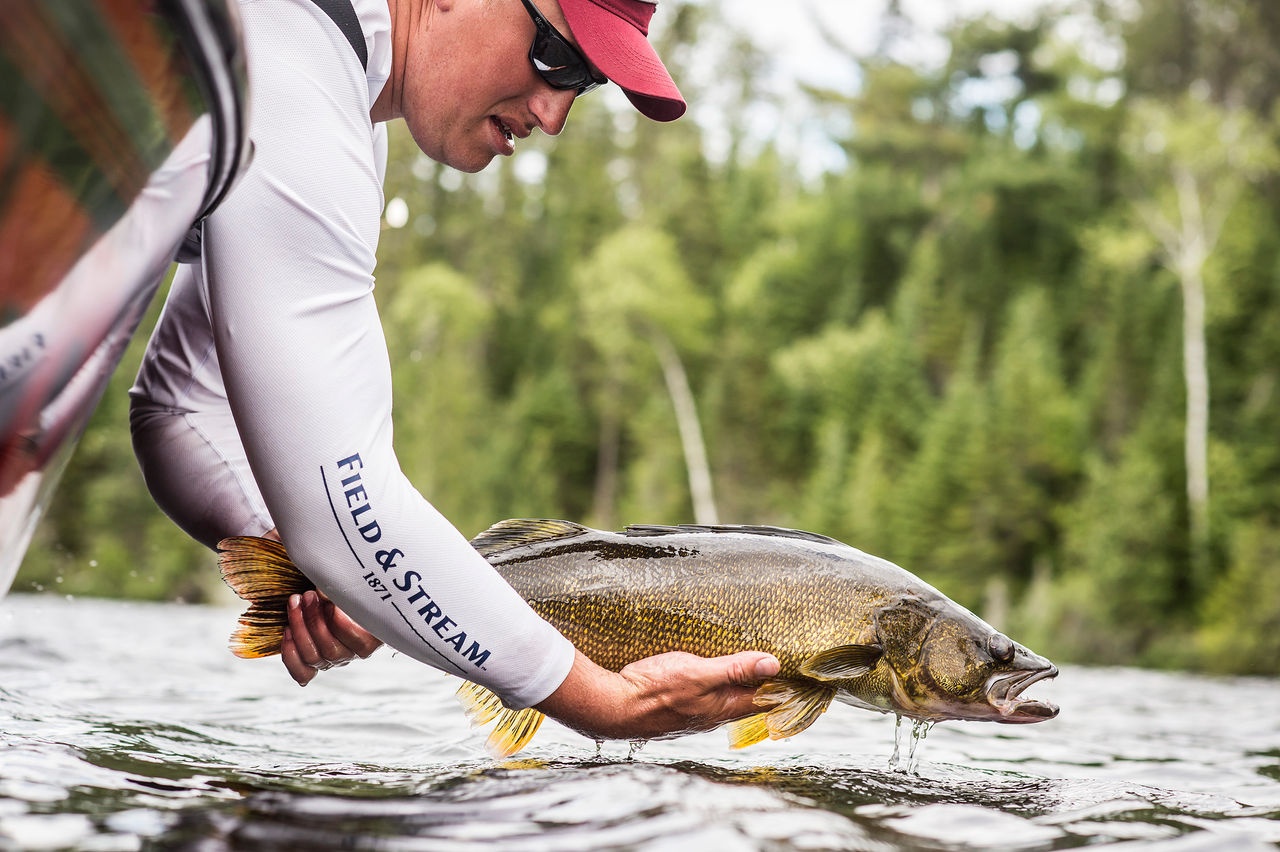
Your hookset was perfect, touching off encouragement on the boat from your buddies as your battle against this worthy underwater foe begins. It’s only a few seconds into the fight, but your fish is really pulling now and as the drag on your reel sings, you start to wonder just how big it really is. “Could it be a large mouth for the ages? The mother of all catfish?”
Then, you see it emerge from the depths and realize it’s not what you expected…
That’s because it has teeth. Now what do you do?
Among freshwater anglers who target bass, catfish, and other easy-to-handle, “lipable” species, reeling in a hefty northern pike, musky, walleye or even a chain pickerel can present challenges at the boat or along the shore. These apex predators can surprise the most experienced fishermen who may think they have something else on the end of their line.
Whether you’re caught off guard by or set out specifically to catch these species, having the right gear to handle them properly is important. It could mean the difference between an enjoyable day on the water and a mess for you and the fish.
With that in mind, here are some pointers to ensure a smooth catch and release:
1. Don’t play the fish any longer than necessary. Keep in mind, they don’t have human stamina. So fight the good fight and enjoy it, but bring the fish in as soon as possible.
2. Once you realize what’s on the end of your line, if it’s big enough to pose a challenge, make sure to have the net wet and ready. Ideally, ditch that old fabric model in favor of a new rubber or silicone design. This style offers two advantages: first, it is less prone to tangling and wrapping around a thrashing fish, which can remove its protective slime coat and increase the chance of it contracting a bacterial infection; and second, if the lure is thrown and gets stuck in the net, it is easier to remove the hooks from the stiffer material.
3. To keep the fish controlled, use the net like a fish pen and leave it in the water. This will help keep the fish calm. If possible, do not bring it onboard or lay it down on the marine carpeting as this can also remove the fish’s protective coat.
4. Next, use fish grippers (often called “Boga grips”) to grasp the fish by the lower jaw. These pierce the jaw of the fish and prevent it from getting away, enabling anglers to handle it without direct contact. Make sure to have a flotation device (i.e. a small empty plastic bottle) attached to the leash of the gripper to prevent it from sinking if it goes overboard. Ask any angler and they’ll agree that there are few things more tragic than knowing you dropped the gripper — and your fish — into the water, sending your catch to a cruel fate with the tool attached to its mouth.
5. After the fish is secured, loosen the tension of the line on the rod. A bent or “loaded” rod can propel lures dangerously towards you or your buddies once they are removed. Let’s face it … no one wants to perform an emergency hook extraction.
6. Next, remove the lure. Quick tip: for anglers who are planning to catch and release, it’s a good idea to have the barbs on the hooks pinched down ahead of time. Yes, this does increase the chances you’ll lose a fish or two should it jump or change direction during the fight, but it will also increase the ease of lure removal once the fish has landed.
7. Often, a fish may swallow an artificial lure deeper in its mouth. If this occurs, lift the fish partially out of the water until you’re in a comfortable position to extract it. Then, using long, thin pliers, forceps or a pistol-grip hook remover, work deliberately and quickly. It’s not easy, but with practice, anglers can learn to avoid the fish’s teeth and remove the bait with no harm to themselves or the fish. Jaw spreaders for monster-size pike or muskies are also an option to aid in lure removal. Enlist your buddies to hold the fish while you perform the extraction, or vice versa, depending on experience or comfort level.
8. Once the fish has been unhooked, try to keep it in the water until you’re ready to have it measured and weighed or have a photo taken. If you’re fishing with friends, make sure they’re ready to capture the moment before you lift the fish out of the water and into the boat or onshore.
9. When holding long fish such as pike, musky, walleye and chain pickerel, make sure to support them gently under their belly and keep them in their natural, horizontal position as long as you can. Try not to arch their backs and do not let their body weight hang vertically by their lower jaw for an extended period as this can cause them injury.
10. Remind yourself that these guys live in the water, so be mindful of their time spent out of it. Be as efficient as possible measuring, weighing and taking a photo if you know you’re going to release the fish. We recommend that this process should not take longer than 15 seconds.
11. If necessary, continue to hold the fish by the gripper and immerse it in the water until the photo is ready to be taken. Once lifted, be aware that pike and musky can go ballistic when held by fish grips. If this is the case, it is recommended that you place your index and middle fingers just inside the fish’s outer gill plate (NOT within the gills) and firmly pinch against your thumb. This will hold the fish without damage. Some anglers prefer wearing a fish glove to protect their fingers, but this can make holding fish more difficult. Other experienced anglers prefer holding fish, like walleye and pike, behind their heads by pressing against the gill plates. This technique can calm the fish and keep it secure, but overall, it is a less reliable method. Do not hold the fish by the eye sockets, since doing so to a fish you intend to release will cause damage to its vision.
12. When you’re ready to release the fish, do not just toss it back in the water. Species such as pike and musky, although heavyweights in a fight, are surprisingly fragile after the catch and need ample time and care upon release. Instead, hold the fish by the tail and let it regain its bearings. Do not “push and pull” the fish to force water through the gills in an effort to help it recuperate as this can actually drown it. Rather, keep it upright and, if necessary, rotate the fish back and forth, clockwise and counter-clockwise, in the water about 20 degrees. Give it a moment or two, and if you’ve done everything correctly, the fish will revive and take off on its own. And if it splashes you with its tail on its way home, consider it good luck for next time.




